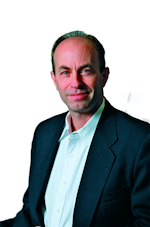Kodak Truesense color filter improves on standard Bayer pattern
Conventional color image sensors are typically designed using the "Bayer Pattern"—an arrangement of red, green, and blue (RGB) pixels, invented by Eastman Kodak (Rochester, NY) scientist Bryce Bayer in 1976, in which half of the pixels on the sensor detect green light, with the other pixels evenly split to detect red and blue light. Software then reconstructs a full RGB image at each pixel after final exposure of the single image sensor. But at the recent Vision 2009 trade show in early November in Stuttgart, Germany, Kodak demonstrated the first integration of the Kodak Truesense color-filter pattern on a CCD image sensor.
The Truesense color-filter pattern builds on the standard Bayer pattern by adding panchromatic or "clear" color pixels (sensitive to all visible wavelengths) to the RGB pixels on a sensor. Because no visible-light wavelengths are excluded, a black-and-white image is detected with high sensitivity. This panchromatic information is then combined with the RGB color information and a final image is generated with increased brightness. This technology increases the overall sensitivity of the sensor, enabling an increase in photographic speed for improved low-light, high-speed imaging. Contact Kodak Image Sensor Solutions at [email protected].

John Wallace | Senior Technical Editor (1998-2022)
John Wallace was with Laser Focus World for nearly 25 years, retiring in late June 2022. He obtained a bachelor's degree in mechanical engineering and physics at Rutgers University and a master's in optical engineering at the University of Rochester. Before becoming an editor, John worked as an engineer at RCA, Exxon, Eastman Kodak, and GCA Corporation.
